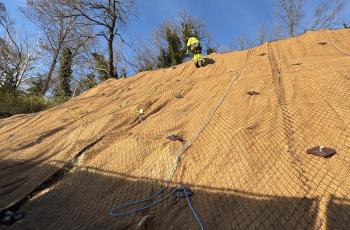What is the purpose of these fees?
These fees support the operation of DC Water’s Industrial Pretreatment Program and recoup the cost of treatment for higher strength wastes. See Pretreatment Program FAQs for more information on DC Water’s Industrial Pretreatment Program.
Who has to pay Waste Hauler fees?
Any Waste Hauler that applies for a permit to discharge hauled waste at the septage receiving facility at Blue Plains Advanced Wastewater Treatment Plant must pay the permit fee to obtain the permit and disposal fees to discharge. Disposal fees are assessed on a monthly basis.
What is an Industrial User
A non-domestic wastewater source that discharges, causes, or permits the discharge of wastewater into DC Water’s wastewater system.
Who has to pay Industrial User fees?
Any Industrial User that is required to obtain a permit to discharge must pay the initial or renewal permit fee prior to receiving a permit and then has to pay an annual compliance fee consistent with its classification and number of outfalls.
What is an outfall?
An outfall is a location that is near the Industrial User’s sanitary connection to DC Water’s sewer system used to evaluate permit compliance and is specifically listed in its discharge permit.
Why are there High Strength Waste Fees?
Non-residential sewer rates are based, in part, on the cost to treat domestic wastewater. Wastewater that has higher concentrations of certain pollutants than in domestic wastewater incurs a higher cost to treat, so that cost is passed on to the discharger.
Who has to pay High Strength Waste Fees?
Any permitted Industrial User that has average pollutant concentrations above the domestic wastewater concentrations listed below must pay high strength waste fees.
- Biochemical Oxygen Demand (BOD) – 300 mg/L
- Chemical Oxygen Demand (COD) – 600 mg/L
- Total Suspended Solids (TSS) – 300 mg/L
- Total Kjeldahl Nitrogen (TKN) or Total Nitrogen (TN) – 45 mg/L
- Total Phosphorus (TP) – 6 mg/L
How are High Strength Waste Fees calculated?
High strength waste fees are calculated by subtracting the domestic wastewater concentrations listed above from the average concentration in the wastewater and multiplying by the total volume discharged to determine the total pounds discharged for the billing period.
The formula is:
High Strength Waste Fee = (C avg – Cdomestic) x Qtotal x 8.34
Where:
Cavg = Average pollutant concentration of all measurements made during a billing period, mg/L
Cdomestic = Domestic-strength pollutant concentration, mg/L
Qtotal = Total flow during the billing period, million gallons per day (MGD)
Note that when COD measurements are used, they are divided in half to determine the BOD concentrations which are then used to calculate the BOD strength charge. If both BOD and COD measurements are available, the individual BOD measurements are averaged and the individual COD measurements are averaged. The higher average concentration of BOD, once COD is converted to BOD, is used.
Who has to pay the PFAS Sampling and Analysis Fees?
Any industrial user where DC Water determines that the sampling and analysis for PFAS is necessary to comply with regulatory requirements placed upon DC Water must pay the fees.
What is PFAS?
See EPA’s pamphlet, PFAS Explained
Current Fee
To see the current fees click here.
For more information, please contact pretreatment@dcwater.com or (202) 787-4177.


